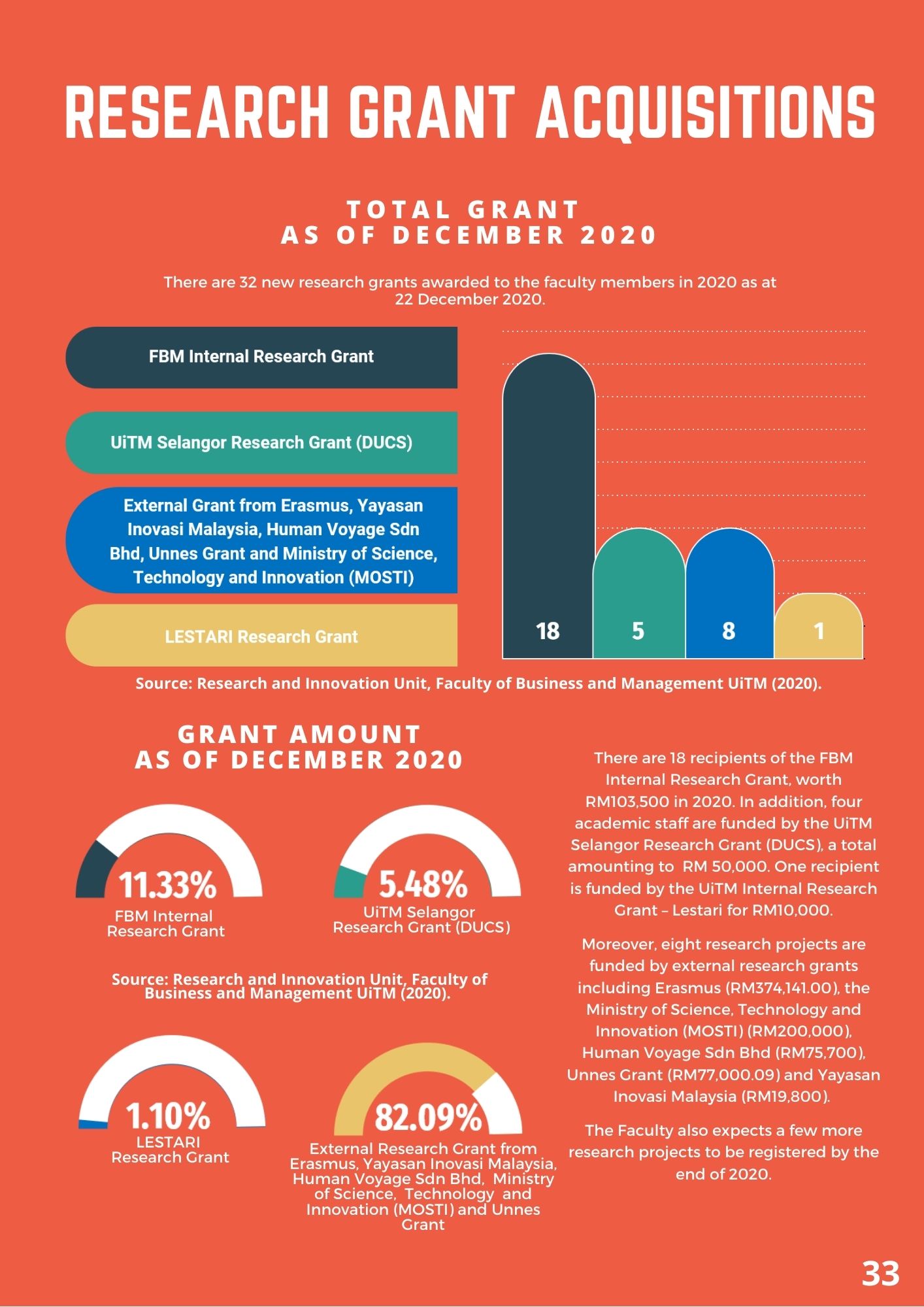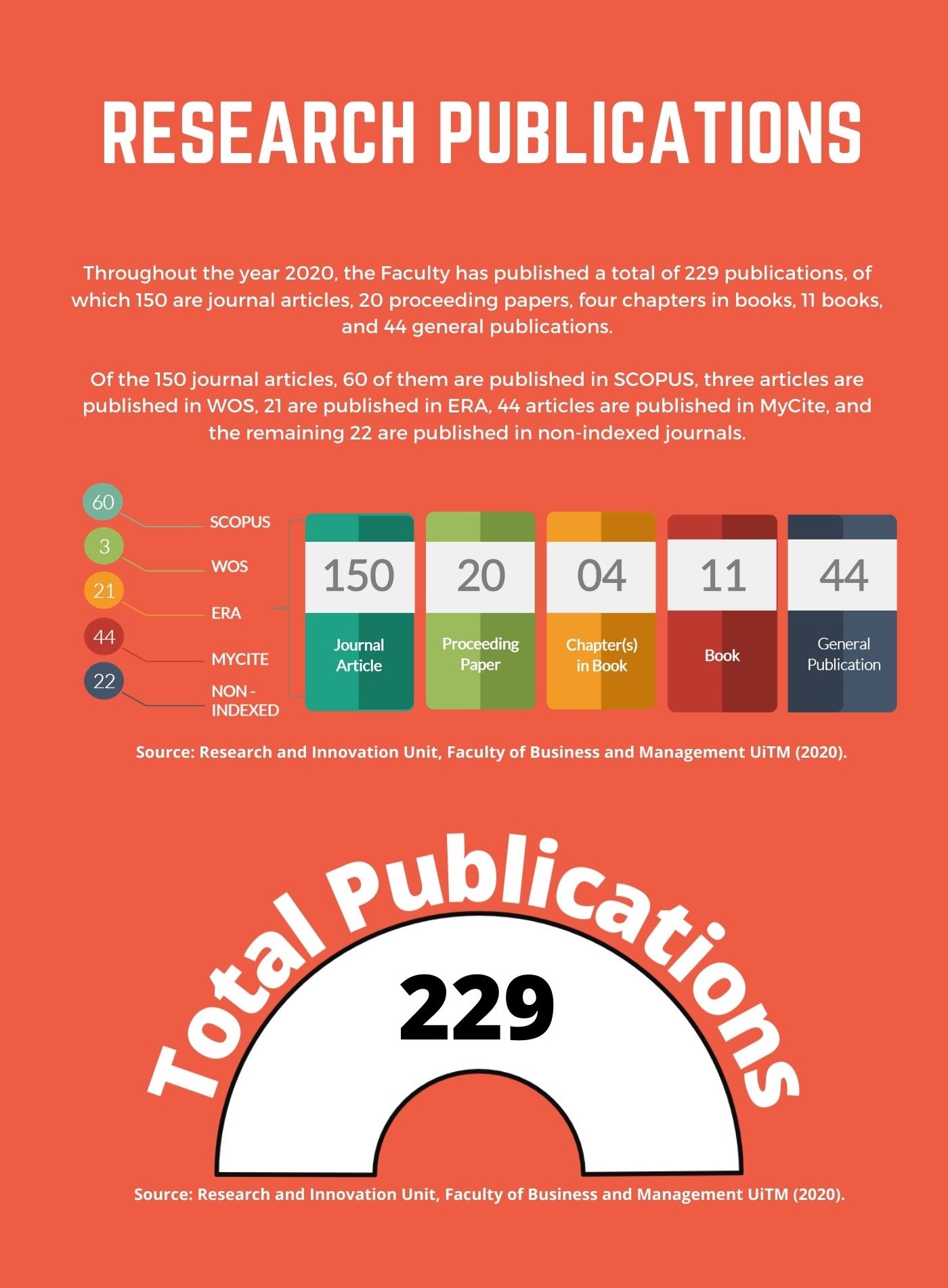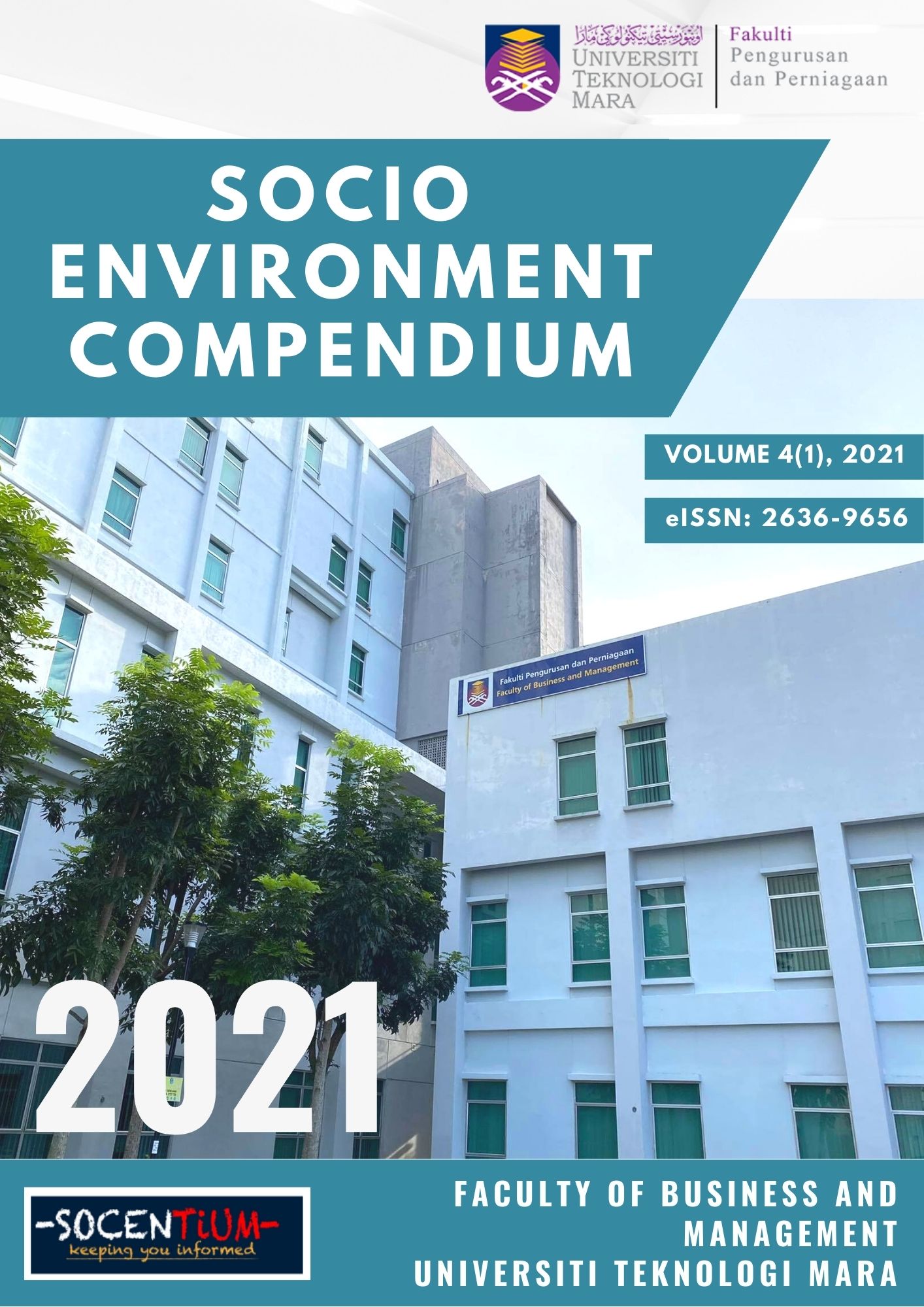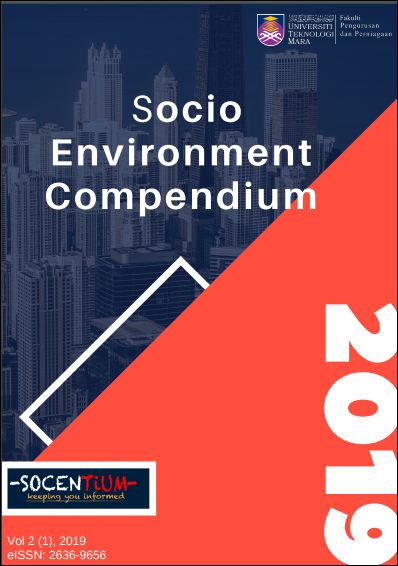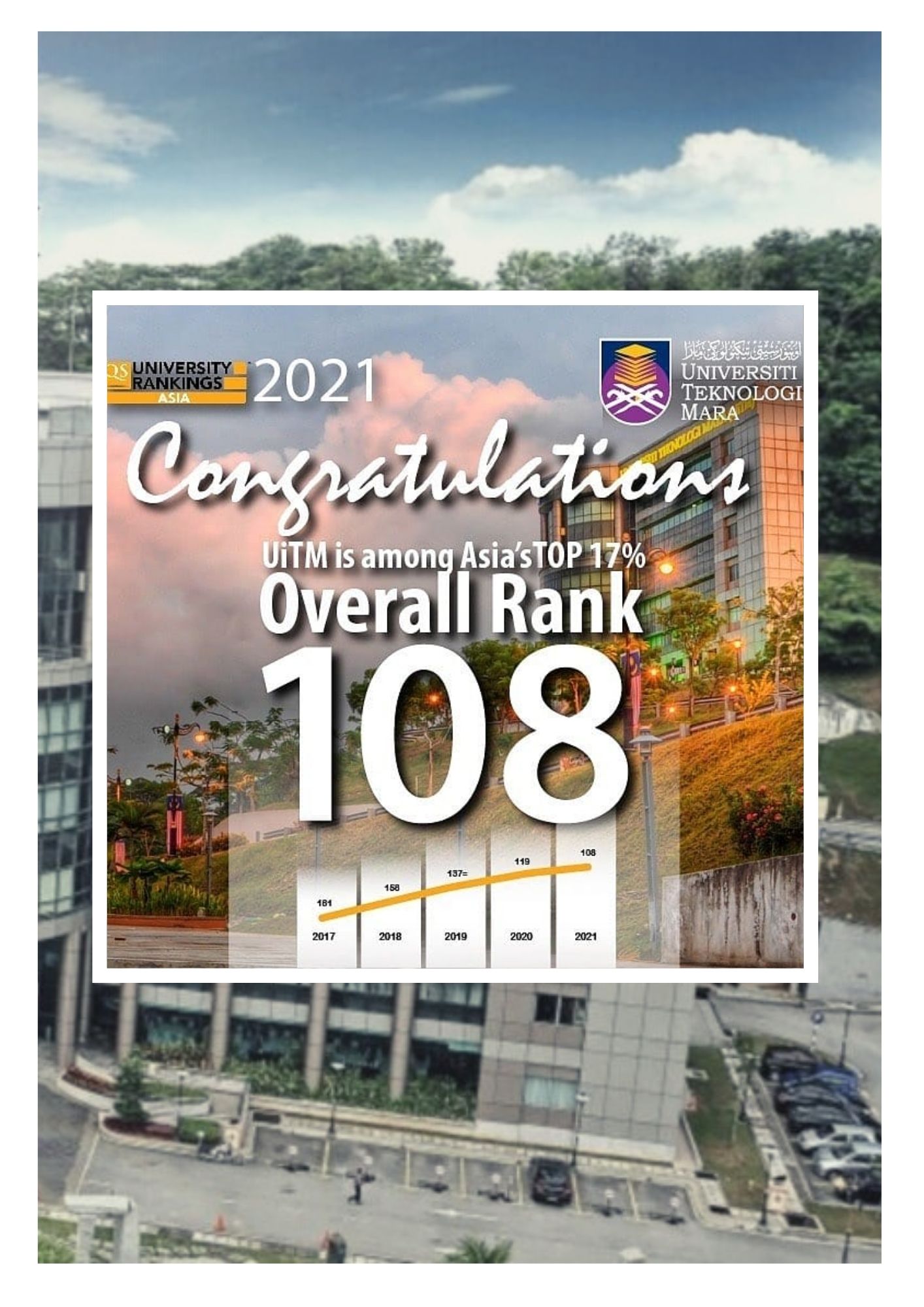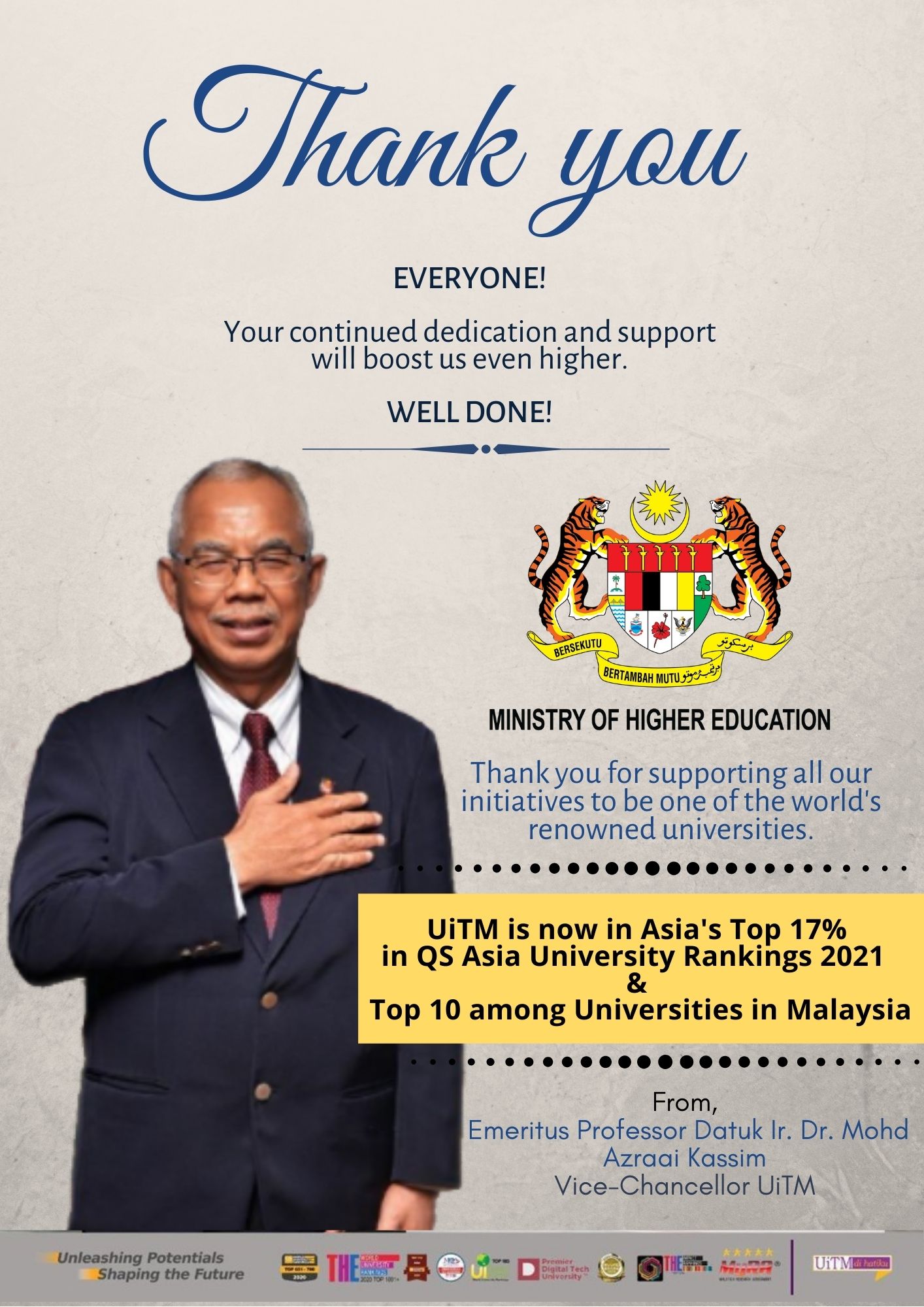- Details
-
Category: Vol (3), 2020
-
Published: Saturday, 21 September 2019 09:29
-
Written by Administrator
-
Hits: 1204
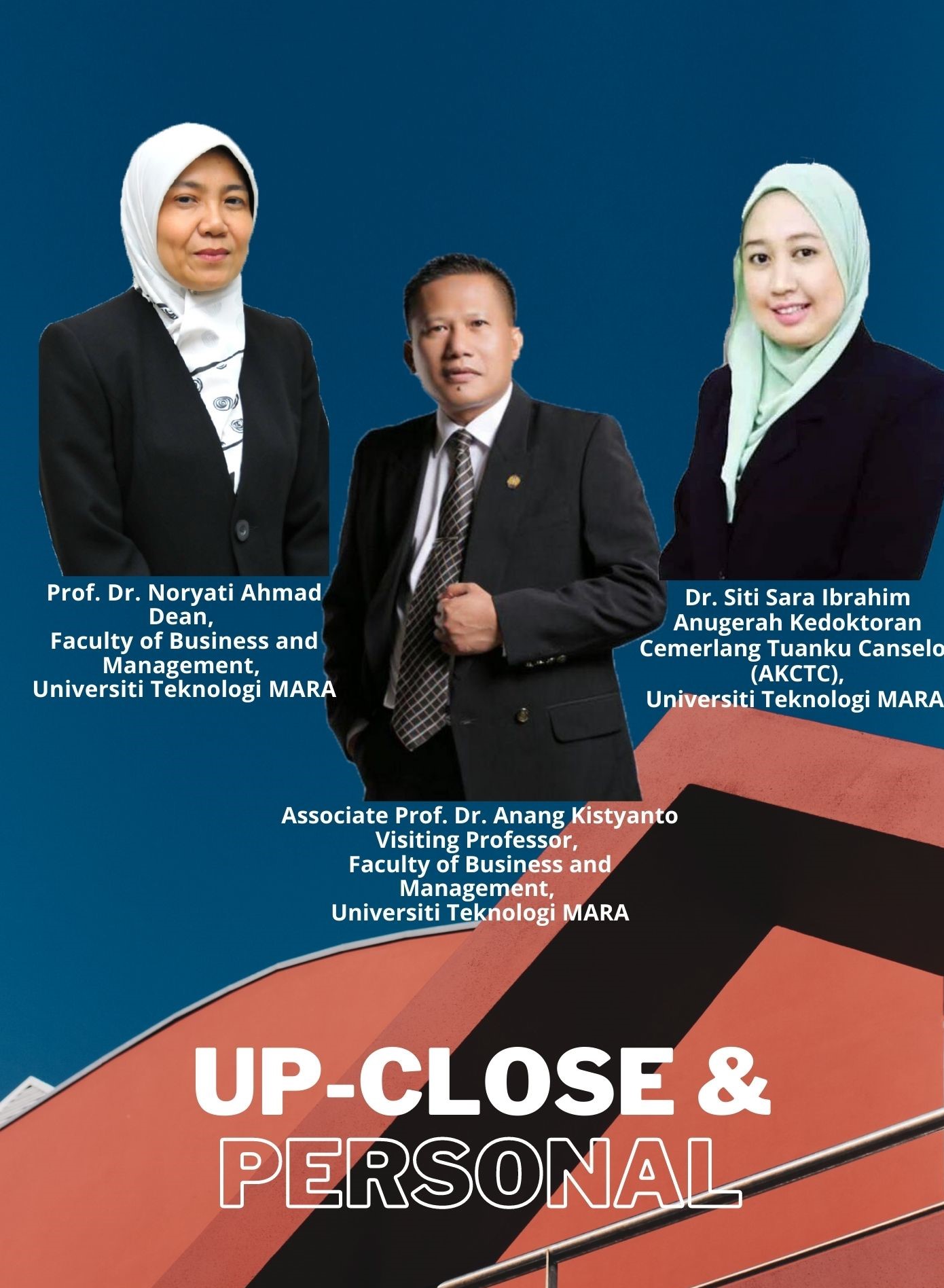
Prof. Dr. Noryati Ahmad, Dean, Faculty of Business and Management, Universiti Teknologi MARA
Editor: Dr. Azlul Kalilah Zaghlol
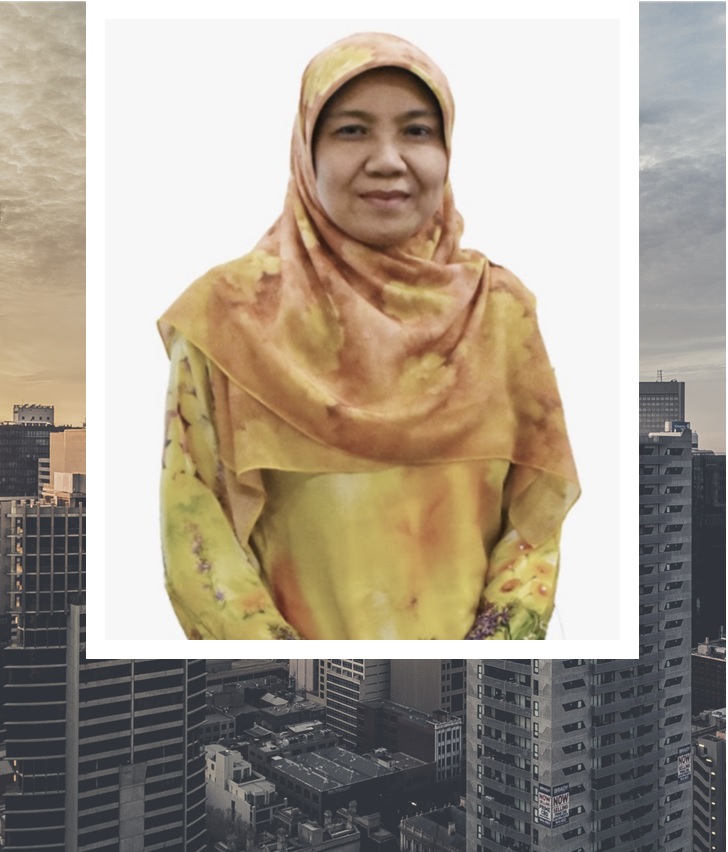
Please provide a brief introduction on your goodself, your education background, your passion, your values and interest, and some background on your current career office position.
First of all, thank you SOCENTiUM for this interview. I feel very privileged to be given the opportunity to be in this issue. To begin with, I was born on 31st August 1962 and had my tertiary education in Singapore before pursuing my Diploma in Business Studies at Institut Teknologi MARA in 1980. I graduated in 1983 and was fortunate to be awarded the Young Lecturer Scheme Scholarship under JPA and thus I began my bachelor and Master degree at University of Miami, Florida. I completed my Master degree in 1986 and began my journey as a lecturer at the age of 24 on 13 January 1987 at Kem Kijang, UiTM Kelantan. I was transferred to the Faculty of Business and Management, Shah Alam in 1990.
I have always wanted to be a lecturer because it is a noble profession. As lecturer you are able to contribute to the development of your students and you will be proud to see them be better and more successful than you.
My values? Be trustworthy, truthful, and sincere in whatever you do. Always manage your time well and do your level best when you are entrusted with any responsibility.
I have held several positions since joining UiTM. These include being the Head of Program, BBA (International Business) (1996), Management Coordinator (1998), Deputy of Academic and Internationalization (2013), Deputy Director of Research Program (2016), and Head of Postgraduate Studies (2018). My latest appointment is as the Dean of Faculty of Business and Management (2020).
My success thus far has to be attributed to my senior lecturers, former Deans, and UiTM top management team members who believed in my capability. In fact, they are partly responsible for my being here. Their commitment and dedication during their tenure in the Faculty of Business and Management have shaped me into what I am today.
Kindly share a little bit about your roles as the Dean of Faculty of Business and Management (FBM), Universiti Teknologi MARA (UiTM). What are your leadership styles and experience, organisational skills, and time management abilities that have facilitated you in achieving the Faculty’s overriding objectives?
Being the Dean of Faculty of Business and Management, UiTM is indeed challenging and a mammoth of responsibility. My main role is to be a strategic leader that helps others focus towards making the school visible, financially sustainable, and effective and efficient operationally.
This is not an easy job. For strategic initiatives to be implemented successfully at the Faculty level, I have to match Faculty members’ interests with the priorities of the Faculty or it will be difficult to inspire and mobilise them to support the key initiatives.
I have no specific leadership style – it all depends on the situation. But I believe that as the Dean I cannot work alone. Everything is about teamwork, transparency, and communication. Through my experience, not everyone will agree with you. Even when it comes to the vision and mission of the Faculty, everyone must be aware of where the Faculty is going. That’s why I try to consistently remind everyone to achieve change and build consensus within our FBM community.
Kindly share some of your most memorable achievements in academic and/or any other fields (state, national and/or international level) which have helped towards achieving the Faculty and UiTM’s vision, mission, and its overall objectives. Has it provided you with a great sense of self-fulfillment?
There are several memorable achievements. Firstly I was instrumental in the development of Advanced Diploma in Business Studies (International Business). Back then I was appointed by Tuan Haji Abdullah to lead a committee to introduce this new program. The program was approved by the Ministry of Education and implemented in 1996 and when ITM was given a university status, this program was renamed as Bachelor of Business Administration (International Business) program. It was the first undergraduate program that specializes in International Business.
I have written several academic books. My first book is Introduction to Malaysian Derivatives, which I co-authored with Prof. Dr. Rosalan Ali and Prof. Dr. Catherine Ho Soke Fun. The book is used by diploma and degree students in UiTM as well as outside UiTM.
I remember one time I was assessing a program in a particular university, and there was this lecturer who asked for my autograph since he has used the book for his class.
Other books that I have written are Fundamentals of Finance with Microsoft Excel and Corporate Finance, both published by Oxford University Press in 2012 and 2018 respectively.
In addition, I was invited by International Journal of Emerging Markets to be their reviewer and was awarded as the journal’s best reviewer in 2017 and 2019. I am also a reviewer for International Journal of Finance and Economics besides serving on the editorial boards of International Journal of Economics, Finance and Management Sciences, International Finance and Banking, Macro Think Institute, International Journal of Islamic Business, UUM, and Jurnal Ekonomi Malaysia, UKM.
I have had the opportunity to engage with industries by carrying out consultancy and training works with, among others, Tabung Haji Berhad, Kuala Lumpur Kepong Berhad, Permodalan Nasional Berhad, Economic Planning Unit, and the Ministry of Transport.
My first consultancy work was developing the financing model for Line 1 Monorail System in Putrajaya for Putrajaya Holding Berhad, which was worth RM102,000. I am also involved with the academic accreditation bodies locally and internationally with the Malaysian Qualification Agency and ABEST21, Tokyo.
Alhamdulillah at the UiTM level, my contributions have not gone unrecognized and I was awarded Khidmat Cemerlang in 1999, 2006, and 2009.
In January 2020, I was appointed as the Chief Editor for Social and Management Research Journal (SMRJ), UiTM. I obtained my professorship in 2018 and before retirement I was appointed as the Dean of Faculty of Business and Management starting from 1st May 2020.
On the basis of your tenure as the Dean of Faculty of Business and Management of UiTM, what do you see as the current and impending major challenges? What are your major concerns and how are you planning to tackle them?
At the time of the interview, I have been the Dean for only about 7 months. I took the position on 1st May 2020 and it was very challenging since I had to lead the Faculty during the Covid-19 pandemic. We were under strict movement control order (MCO) imposed by the government and most of the time, communication with Faculty members had to be done online. I realized there were many things that I needed to know and understand. Working from home (WFH) is something that I needed to get used to but when the government decided to relax the MCO, I was so happy to be in my new office. Alhamdulillah I am very fortunate because I have very strong support from the Faculty especially the top management team.
Current and impending major challenges? Steering the Faculty to greater heights in the new norm condition. Some strategic initiatives entrusted by UiTM top management could not be fully achieved due to uncertainties that appear throughout this year despite efforts being put into it. For example, we were not able to carry out our outreach program planned for this year and had to do it online – it would have been more effective if done on a face-to-face (F2F) basis.
On the other hand, we were able to achieve more than the expected target set for some strategic initiatives like securing MOUs/MOAs with international partners/ institutions and engaging with international partners as guest speakers, adjunct professors, exchange students programs, etc. In terms of research activities, we were able to secure many grants, internationally and locally. However I would like to see more academic staff involved in research activities.
Again, I would like to emphasize that these would not have been possible if I did not have the strong support and encouragement from FBM Faculty members.
What are your personal expectations and aspirations, going forward? Where do you see the Faculty of Business and Management heading to?
The Faculty of Business and Management is filled with many potential individuals. I am heartened by the talented people I meet and work with in the Faculty. Many of them have a genuine drive to support the organization and student growth locally and internationally by providing high-quality education and being active in research and community activities.
Since every business school in a university wants to be a premier business school locally and internationally, competition is intense. ersonally, I would like for FBM to be a globally renowned business school. To achieve that, FBM must re-evaluate their purpose to ensure that we continue to add value to the education market. We must examine whether our current Faculty and members have the required skills, infrastructure, and info structure that are in sync with current academic program requirements and curriculum development and design that fulfill the needs of the industry.
On a lighter note Prof, being a woman and the top person in the Faculty of Business and Management of UiTM, how do you balance between your work and family commitments? What may have inspired you to become an academic? And how do you usually spend your spare time?
Honestly it is really difficult… Sometimes I feel so guilty that I have been focusing on my work rather than on my family. But the comforting part is that since most of my children are in their 20s and the youngest is going to take his SPM this year, they are more independent and have a good understanding of my commitments as a Dean. But I make it a point to be with them during my free time and before the Covid-19 pandemic I would occasionally take 2 or 3 vacation days to be with them.We try to have dinner together as much as possible.
My spare time is mostly spent on running household chores and entertaining my family needs. I believe good time management and being very disciplined in what you are doing and need to do is very crucial.
What is your personal take on the current Covid-19 pandemic situation on how it has had and will continue to have an impact on the Faculty of Business and Management’s overall well being?
The current Covid-19 pandemic situation has affected the strategic planning activities that FBM has laid out for this year. The MCO imposed by the government has affected the normal activities that everyone was used to. For instance, F2F activities of students, communities, and industries have had to be postponed or carried out online to curb the spread of pandemic. Classes are conducted on open distance learning (ODL) basis and both lecturers and students have had to grow accustomed to this new teaching and learning approach.
We are now in our 9th month of the movement control order but I believe that almost everyone has become used to the new norms and we are seeking and carrying out alternative ways to proceed with our day to day activities in UiTM.
Despite the disadvantages faced by FBM, there are also many benefits from this situation. Meetings can be carried out easily without worrying about the venue and if members might be late. There is no longer any need to worry about enough availability of classrooms, and lecturers have been forced into being creative in their online teaching methods. We also experienced more and faster international engagements with our overseas university partners via webinar series, online guest speakers, and student exchange programs. We have saved travelling costs as well as time. Just set a date and then we will be talking to our overseas counterparts on either Google Meet, Webex, or Zoom. What we must do now is to reexamine and realign the current FBM objectives where necessary so that they can be fulfilled and we will be able to do the best that we can.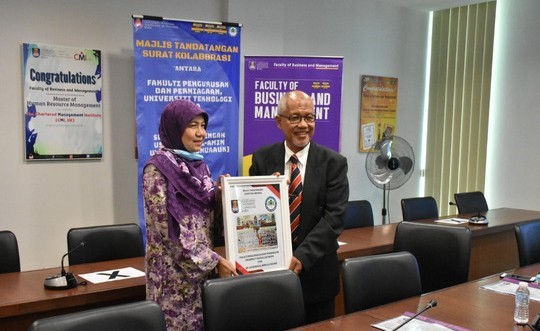
Kindly share about your contribution towards the holistic development of UiTM and the local community at large. What are one or two of your proudest professional achievements in this respect?
As I have been a panel of assessor for Malaysian Qualification Agency since 1999, I have been able to provide my knowledge and experiences related to Outcome Based Education and Accreditation of Prior Experiential Learning (APEL) to the development and designing of FBM curricula.
In 2015, I was also appointed by ABEST21, an accreditation body from Japan, to be part of their peer review team that assesses university programs from Indonesia, Malaysia, Singapore, Russia, and Thailand. This is a very valuable experience since it enables me to benchmark the standard of curriculum design and development of other international universities against, and thereby improve, ours.
Could you also kindly share about the Faculty’ strategic planning, growth plans, and future collaboration plans (within UiTM, state, national and/or international levels) especially in line with achieving UiTM’s tagline “Unleashing Potentials Shaping the Future”?
UiTM 2025 Strategic Plan actually outlines the path for FBM to structure our strategic planning, growth plans, and future collaborations, be it at the local and international level. In executing the strategic plan, UiTM focuses on three strategic core areas which are Quality Education, Global Excellence, and Value-Driven Performance. Hence, FBM structures our strategic action plans in tandem with this. FBM would like to create business professionals and leaders with an entrepreneurial mindset.
For that to be achieved, we must also ensure that our academic and administrative staff are equipped with appropriate knowledge and expertise to meet that challenge. Not forgetting also that FBM must be innovative through research, publication, and commercialization. We must have many global and local outreach and engagement activities.
If you have any additional information that you could like to share, please do not hesitate to continue sharing with us here. Thank you, Prof.
I will be retiring in two years’ time and will definitely miss my years being in UiTM, particularly at the Faculty of Business and Management. By that time, I will have served UiTM for about 35 years. Thank you FBM and UiTM for these wonderful and rewarding experiences. For those who have many more years in FBM, my advice is to treat your workplace as a place for you to learn, relearn, and discover your potential.
You will be spending many years at FBM and surely you would want to leave this place with great and wonderful memories and be proud that once upon a time you were instrumental in shaping the lives of FBM students, colleagues, and peers.
We would like to express our sincere appreciation again Prof. Thank you very much for your time. We truly value your kind cooperation in contributing to SOCENTiUM. May you be blessed always.
Dr. Siti Sara Ibrahim, Anugerah Kedoktoran Cemerlang Tuanku Canselor (AKCTC), UNIVERSITI TEKNOLOGI MARA
Editor: Nur ‘Asyiqin Ramdhan
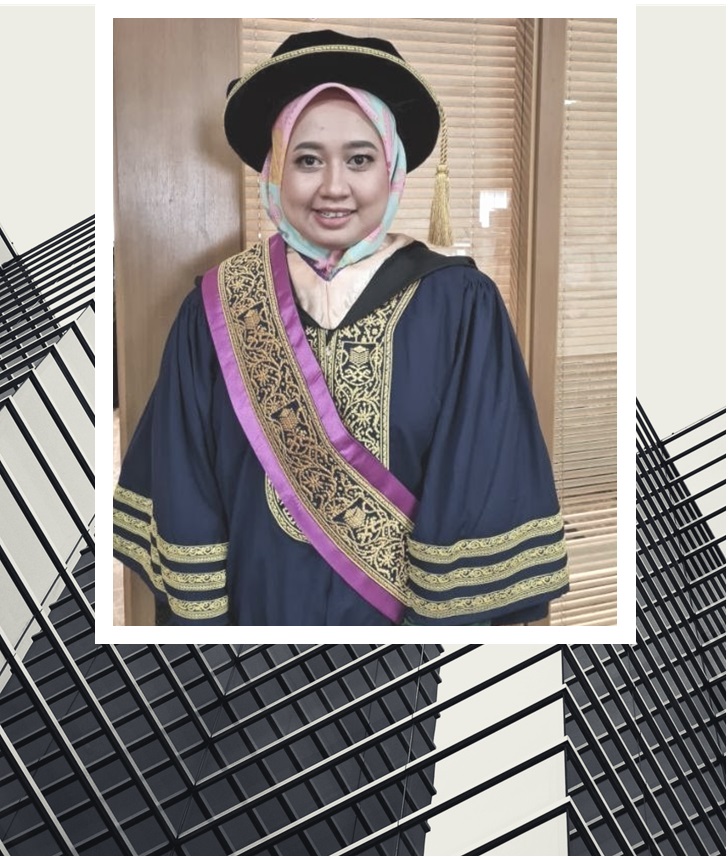
Dr. Siti Sara Ibrahim of UiTM FBM has been selected as the award recipient of the 2020 Doctoral Excellence Award of Chancellor for her successful PhD in Business Administration from Universiti Teknologi MARA (UiTM), Malaysia. Getting this award is an admirable achievement for the Faculty since it has long been held by other faculties. Originally from Kuala Lumpur and growing up as the seventh of eight siblings, Dr. Sara had her undergraduate education in Diploma in Investment Analysis and Bachelor (Hons) of International Business at UiTM before pursuing her Master in Business Administration at UKM. Today, she is a senior lecturer at Universiti Teknologi MARA, Negeri Sembilan.
With a focus on the Waqf Project Collaboration PhD area, she has been awarded Graduate on Time (GoT) by the university. She began her vocation at Financial Institution in 2007 prior to joining UiTM in 2011. Besides an enriching career as a lecturer, she is also involved in many research projects with private, government, and international institutions. With deep interest in research, innovation, and community programmes, she is active in joining conferences, invention & innovation competitions, as well as being a volunteer at a few Non-Profit Organisations (NGOs) in Malaysia.
What is the biggest factor that has helped you to be successful?
My support system which is my husband, kids, family, in-laws, supervisor, friends, Faculty, Institut Pengajian Siswazah (IPSis) and UiTM. I consider all these as my support system. Therefore, in order for me to achieve whatever goals I have set up in life, I will always make sure my support system is ready and understand well how they can support me along the journey.
I need husband, kids, and family so I can always lean on their shoulder in times of need. They will always be ready to help me to take care of the kids and house chores as well as give motivation for me to keep fighting and finish the journey successfully.
The people in your support network will be there for you when you need to talk after a long day, or when you’re feeling overwhelmed with work, school, or your other obligations.
I need supervisors to keep motivating me and give guidance towards the correct path for me to finish this journey successfully. I need friends to help me stay engaged in my PhD and motivate me to succeed. If am overwhelmed or struggling, friends in my support network will be willing to help me and offer their guidance, insight, and strategies for success. I need the Faculty, IPSis, and the top management of my workplace to always support me and make the PhD process easier and fast.
What are your tips to complete you PhD journey?
Other than making du'a to God, strategise ahead for your PhD journey. This is what I always practised during my three year journey. Strategising can be seen in many perspectives. Firstly is the relationship with your supervisors and your networking. Fully utilise their expertise, experience, and networking to build your success.
Secondly, manage your time effectively and efficiently. Be smart. You don’t need to devote 100% of your time to your research or thesis. Instead, you should prioritise which should be first, where, and when. I would always have my three year, one year, 6 month, 1 month, 1 week or even daily “to do list” and paste it anywhere, like at your workstation or at home, to ensure everything on the list is being completed according to the time plan. If I manage to complete it, I will definitely reward myself with bonding time with the family.
Another thing, you should learn and practise. Learn skills that can expedite your PhD process. We have many software, apps, as well as gadgets that can help us in reading and writing. This will save your time and lessen the burden. For example, you don’t need to exactly read everything, line by line, when you are reading a journal. Instead, you need to know the tips on how to read a journal effective and efficiently.
How does a journey experience improve the prospects of success in your future career?
My PhD journey has made me realise how important lifelong education is. We should never stop learning until the end. Even after finishing my PhD, I still attend courses, read books, and get advice from experts. This is because I realise, the more I learn the more I don’t know. Therefore, the PhD journey has made me a better person for my future as I always think and plan ahead for my career.
Currently, what are your contributions to UiTM after coming back from PhD?
I currently devote most of my time to giving webinar sessions on sharing tips to Graduate on Time (GoT), Success in PhD Journey, How to Write and Publish in High Impact Journal, etc. I also devote my time to help other PhD students whether in my campus or outside UiTM. I offer free consultation and guidance. I’m also currently helping my friends in the Faculty to start writing for a journal publication and I encourage them to write as well as to apply for research grants.
What is your advice to potential and on-going PhD candidates?
Doing a PhD can often be a journey filled with many successes and hardships. However, regardless of your reasons for doing doctoral research, the fact that you are doing it completes this journey. You have three or four years ahead of you to develop and learn. Much of that time will be focused on your research but it shouldn’t stop there. You should also focus on YOU and make YOU a priority. When the priority is YOU, it will give you a warrior spirit to fight and to finish the journey.
In fact, gaining a PhD will be a huge achievement and can potentially broaden your access to a diverse range of possibilities but the PhD alone won’t be enough. Now is the time to expand your skills, knowledge, and attributes. It is also the time to learn and grow and develop a greater understanding of what motivates and enthuses you, what you want from life, and where you fit.
Therefore, I’d encourage you to use this PhD journey to develop your confidence, build networks, gain insights, improve your self-awareness, add to your experience, and perhaps even have some fun. Start now and keep growing rather than thinking a better time will come.
 ASSOCIATE PROF. DR. ANANG KISTYANTO, DEAN, FACULTY OF ECONOMICS UNIVERSITAS NEGERI SURABAYA
ASSOCIATE PROF. DR. ANANG KISTYANTO, DEAN, FACULTY OF ECONOMICS UNIVERSITAS NEGERI SURABAYA
Editor: Dr. Nursaadatun Nisak Ahmad
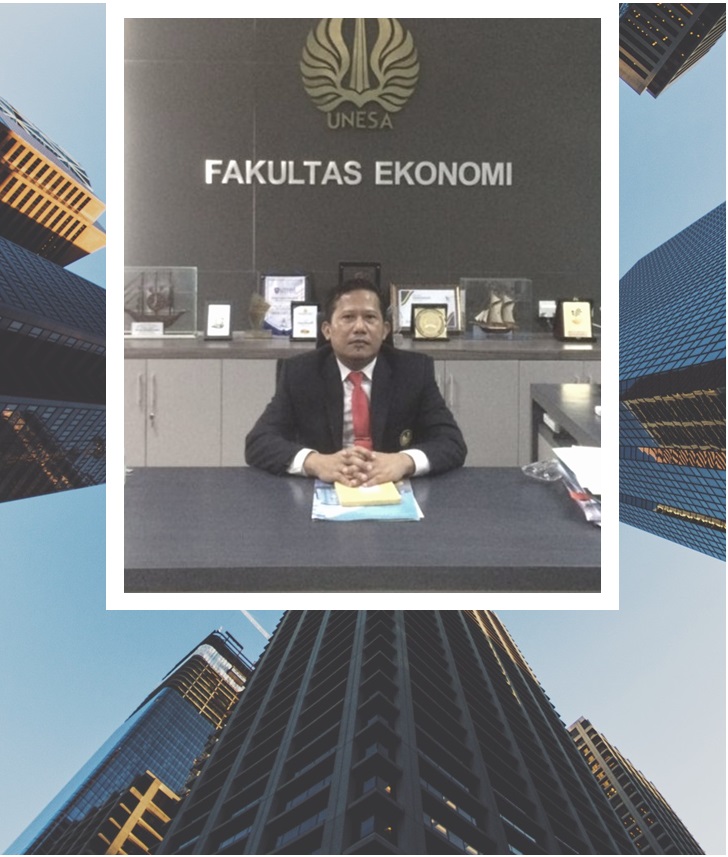
My name is Associate Prof. Dr. Anang Kistyanto, S.Sos, M.Si. I was born in Tuban, East Java, Indonesia, December 9, 1971. I received my Bachelor of Social Science (S.Sos.) in Public Administration, Master of Science (M.Si.) in Human Resources Development in 2000, and Doctor of Philosophy (Dr.) in Human Resources Management in 2008 from Brawijaya University. My expertise is in career development and I have published scientific articles nationally and internationally. I am also a reviewer for the Institute for Research and Community Service (LPPM) Universitas Negeri Surabaya. My Scopus ID is 57188731700 and my Google Scholar profile can be accessed here.
Prior to becoming the Dean of Faculty of Economics, Universitas Negeri Surabaya (2019-2023), I was the Vice Dean of Student Affairs, Faculty of Economics, Universitas Negeri Surabaya between 2015-2019. Before that I was the Secretary of Management Department, Faculty of Economics, Universitas Negeri Surabaya between 2011-2015. I was also the Dean of Faculty of Economics, University of Hasyim Asy'ari (UNHASY) Tebuireng Jombang between 2013-2017.
Kindly share your current academic and career development at the state, national and international levels.
Besides fulfilling my duties as the current Dean of the Faculty of Economics, Universitas Negeri Surabaya, I also perform active public leadership at this time as the Coordinator for Student Affairs of the Association for Economic Education under the Indonesian Higher Education Institute (APE-LPTK) in 2019-2023. Besides, I am also active as a member of the Focus Group on MSMEs, Cooperatives, and Sharia Finance, Indonesian Economics Bachelor Association, Surabaya Branch in 2019-2022.
Kindly share your highest achievements in academic and other fields, including at state, national and international level, that have led to self-fulfillment.
I have received national competitive research grants, such as international publication grants (2009) and fundamental research grants (2013). I have received national competitive research grants, such as international publication grants (2009) and fundamental research grants (2013).
I also passed the Training of Trainer (TOT) for Writing Scientific Articles, Directorate General of Higher Education, Ministry of Education and Culture (2013). I have been a reviewer of institutional development grants, Directorate General of Higher Education, Ministry of National Education (2009-2011). I also have received other recognition as speaker and keynote speaker in international conferences such as at the 1st International Conference of Industrial Engineering Technology and Knowledge Science (IETechS 2019) at Universiti Tun Hussein Onn (UTHM) Malaysia.
Kindly share your contributions of career development to the organisation and local community.
After anchoring my career (career anchor) as a lecturer having previously worked as a marketing officer of a leasing company, I designed a roadmap as a professional lecturer, starting from continuing my PhD study to securing academic positions as teaching staff, expert assistants, assistant professors, associate professors, and professors.
In my case, the academic journey from teaching staff to associate professor was completed within four years (2005-2009). This impressive achievement is used as an example to motivate young lecturers to plan their career and design a roadmap for personal development as professional lecturers. My story is also used as a reference for career development policies and mentoring programmes for FE Unesa lecturers. In 2013, I became Detaser (Expert Lecturer Mobilization Program) of the Ministry of Education and Culture of the Republic of Indonesia in charge of assisting university development. Since 2011 until now, I have been a lecturer certification assessor.
Kindly share about you successful collaboration with industries, universities (especially with UiTM), and agencies at state, national and international levels.
We are collaborating with The Indonesia National Islamic Finance Committee (KNKS), BNI Syaria, and Universiti Technologi MARA (UiTM) to develop Islamic economics learning and contribute to the development of the halal industry in the world.
Meanwhile, in order to develop entrepreneurial students, we collaborate with the United States Agency for International Development (USAID) Indonesia, Mien R. Uno Foundation (MURF), and Junior Prestasi Indonesia (JAPRI to Campus). In addition, we collaborate with private companies, state companies (BUMN), and SMEs in Indonesia.
Kindly share about your career planning and future collaboration at national and international levels especially in academics.
Universitas Negeri Surabaya aims to participate more actively in post doctoral programmes abroad, and collaborate in research and publications with foreign lecturers, visiting professors, speakers, and keynote speakers at international conferences abroad.
To realise this plan we are currently collaborating with UiTM, Universiti Tun Hussein Onn Malaysia, Universiti Sains Islam Malaysia, Universiti Pendidikan Sultan Idris, Universiti Sains Malaysia, School of Business and Economics of Universiti Brunei Darussalam, Didyasarin International College and Hatyai University Thailand, and National Pingtung University of Science and Technology Taiwan.
Currently, a lecturer research collaboration and student exchange between FE Unesa and FBM UiTM are being carried out. The next plan of cooperation is collaboration on community service projects, publications, international conferences, double degrees, visiting professorships, and teaching staff development as well as building a network organisation.
- Details
-
Category: Vol (3), 2020
-
Published: Monday, 13 May 2019 14:00
-
Written by Administrator
-
Hits: 600
Editor: Dr. Nur Zahidah Bahrudin
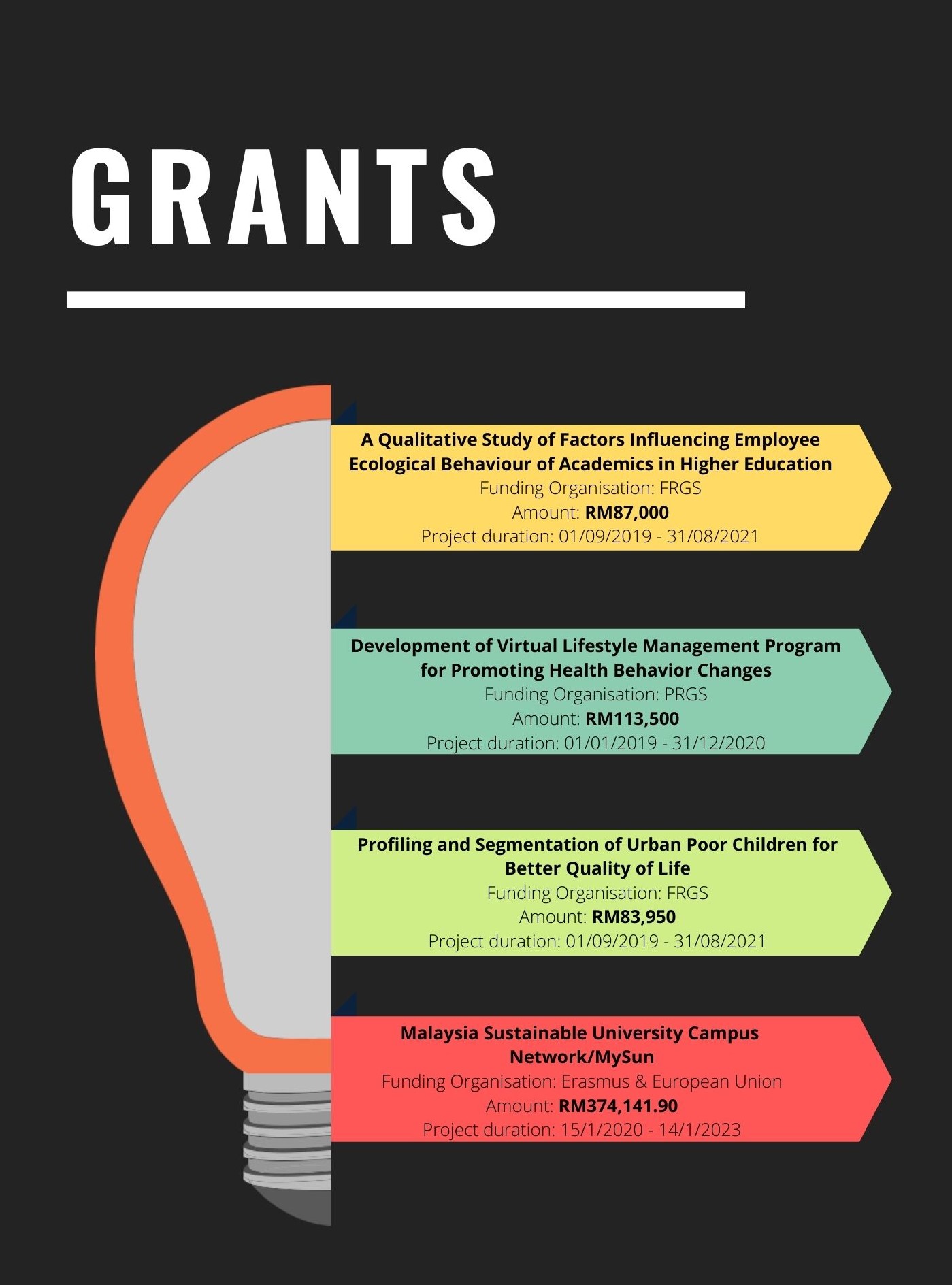
QUALITATIVE STUDY OF FACTORS INFLUENCING EMPLOYEE ECOLOGICAL BEHAVIOUR OF ACADEMICS IN HIGHER EDUCATION
M.Y. Yusliza*, Zikri Muhammad*, Khalid Niazi*, Wan Zulkifli Wan Kassim*, Muhamad Khalil Omar** Nik Hazimah Nik Mat*
*Faculty of Business, Economics and Social Development, Universiti Malaysia Terengganu, 21030 Kuala Nerus, Terengganu, Malaysia.
E-mail: This email address is being protected from spambots. You need JavaScript enabled to view it.
**Faculty of Business and Management, Universiti Teknologi MARA, Puncak Alam Campus, 42300 Selangor, Malaysia.
E-mail: This email address is being protected from spambots. You need JavaScript enabled to view it.
ABSTRACT
The most crucial component for facilitating higher education institutions’ moves towards becoming low-carbon campuses is employee ecological behaviour (EEB) of the academics. It is important to determine how EEB can be influenced by other factors. Thus, the purpose of this study was to determine how EEB of academics at Malaysian universities is influenced by environmental, organisational, and individual factors. Using focus group discussion method, data were collected through semi-structured, face-to-face interviews with selected academics from Malaysia’s top four research universities. Results showed that under each of three major factors, several themes were identified as influencing EEB. In addition, under the theme outcomes and benefits of EEB, subthemes identified were sustainability and economic, social, and nvironmental benefits. This study provided useful insights into current green practices at Malaysian universities that may indicate their feasibility of becoming low-carbon campuses.
Keywords: Employee Ecological Behaviour, Higher Education Institutions, Malaysia, Green Top Management, Environmental Knowledge.
1. INTRODUCTION
Higher education institutions not only carry the responsibilities of shaping the nation (Lozano, 2006) and training the next generation’s leaders, decision makers, and managers (Alshuwaikhat & Abu bakar, 2008), but also of achieving the goal of low carbon emission and proper utilisation of resources. Meeting these two goals requires that university staff, especially academics, engage in a high level of employee ecological behaviour (EEB). EEB refers to behaviour employees engage in at the workplace that produces less harm to the natural environment or enhances the ecosystem. It is important to determine the influencing factors, challenges, and issues related to EEB that academics face specifically at the workplace. Their green behaviour at the workplace maybe different from the one at home (Davis et al., 2020). To the best of our knowledge, studies that examine the antecedents of EEB of academics at Malaysian universities have not been conducted. Thus, the purpose of the current study was to determine how EEB of academics at Malaysian universities is influenced by environmental, organisational, and individual factors. This study filled the knowledge gap by investigating the impact of individuals’ capabilities to perform EEB. In addition, the study focused on academics’ environmental practices at the workplace, which added new knowledge about academics’ green behaviour at Malaysian universities. At the same time, this study investigated current and real time practices of nature protection at universities. This study also aimed to determine to what extent academics’ opinion on daily green practices helped them protect nature. This concept has long been suggested for further attention (Fawehinmi et al., 2020).
2. METHOD
This study employed qualitative research method in the form of focus group discussion. Data were collected through semi-structured, face-to-face interviews with selected academics at four Malaysian research universities. The interviews consisted of 37 questions and were divided into eight sections. The interviews lasted 60-90 minutes, and they were recorded. Relevant passages of the interviews were first analysed and categorised into three meta types—environmental, organisational, and individual factors. Then, these passages were further analysed to identify the themes.
3. RESULTS
Content analysis of the data under each of the three major factors produced different themes considered as specific factors that influence the EEB of academics. Under environmental factor, four themes were identified, namely environmental attitude, environmental awareness, environmental knowledge, and environmental consciousness. Under organisational factor, three themes were obtained, namely green top management, green transformational leadership, and green organisational climate. Under individual factor, two themes were identified, which were green mindfulness and green self-efficacy. Other broad themes that also emerged were current practices and the situation at Malaysian universities, benefits and outcomes of EEB, and issues and challenges in implementing EEB. Under the broad theme current practices at Malaysian universities, notable subthemes identified were implication of green human resource management practices, issuance of blueprints, and environmental policies and regulations. Under the theme implementation issues and challenges, subthemes identified were time consuming and lack of facilities. Under the theme outcomes and benefits of EEB, subthemes identified were sustainability and economic, social, and environmental benefits.
4. DISCUSSION
Most academics agreed that their EEB is influenced by their positive attitude towards the environment. This concurs well with Ajzen (1991). Majority of academics believed that their EEB is influenced by their environmental awareness, a result consistent with Lillemo (2014). Another theme considered as a factor that influences EEB of academics is their environmental knowledge. This result is aligned with Fawehinmi et al. (2020). Most academics expressed agreement regarding the importance of environmental consciousness. The positive relationship between engaging in EEB and being conscious of the environment is explained by Mancha and Yoder (2015). From data analysis, it was found that academics believed their EEB is influenced by top management, a finding in line with Graves et al. (2019). Another influential factor that influences EEB as perceived by academics is green transformational leadership of their superiors. This is because academics tend to imitate their immediate superiors at work. The result is consistent with Graves et al. (2013). EEB is also influenced by organisational climate, and this aligns with Chou (2014). At the individual level, academics’ EEB can be influenced by two factors, namely their green mindfulness and green self-efficacy. The result is similar with Dharmesti et al. (2020) for green mindfulness and Kim et al. (2016) for self-efficacy. Our finding that EEB provides financial, economic, and social benefit to universities is consistent with Yusoff (2020).
ACKNOWLEDGMENT
Acknowledgment is extended to the Ministry of Higher Education Malaysia for awarding the Fundamental Research Grant Scheme (FRGS) to fund this research (Vol. No. 59600).
REFERENCE
Ajzen,I. (1991). The theory of planned behavior. Organizational Behavior and Human Decision Process, 50,179–211. https://doi.org/10.4135/9781446249215.n22 Alshuwaikhat,
H. M., & Abubakar, I. (2008). An integrated approach to achieving campus sustainability: assessment of the current campus environmental management practices. Journal of Cleaner Production, 16(16),1777–1785. https://doi.org/https://doi.org/10.1016/j.jclepro.2007.12.002
Chou C. J. (2014). Hotels’ environmental policies and employee personal environmental beliefs: Interactions and outcomes. Tourism Management, 40, 436–446. https://doi.org/10.1016/j.tourman.2013.08.001
Davis, M. C., Unsworth, K. L., Russell, S. V., & Galvan, J. J. (2020). Can green behaviors really be increased for all employees? Trade-offs for “deep greens” in a goal-oriented green human resource management intervention. Business Strategy and the Environment, 29(2), 335–346. https://doi.org/10.1002/bse.2367
Dharmesti, M., Merrilees, B., & Winata, L. (2020). “I’m mindfully green”: examining the determinants of guest pro-environmental behaviors (PEB) in hotels. Journal of Hospitality Marketing and Management, 29(7), 830–847. https://doi.org/10.1080/19368623.2020.1710317
Dumont, J., Shen, J., & Deng, X. (2017). Effects of Green HRM Practices on Employee Workplace Green Behavior: The Role of Psychological Green Climate and employee green values. Human Resource Management, 56(4), 613–627. https://doi.org/10.1002/hrm
Fawehinmi, O., Yusliza, M. Y., Mohamad, Z., Noor Faezah, J., & Muhammad, Z. (2020). Assessing the green behaviour of academics: The role of green human resource management and environmental knowledge. International Journal of Manpower. https://doi.org/10.1108/IJM-07-2019-0347
Graves, L. M., Sarkis, J., & Gold, N. (2019). Employee proenvironmental behavior in Russia: The roles of top management commitment, managerial leadership, and employee motives. Resources, Conservation and Recycling, 140(October2017), 54–64. https://doi.org/10.1016/j.resconrec.2018.09.007
Graves, L. M., Sarkis, J., & Zhu, Q. (2013). How transformational leadership and employee motivation combine to predict employee proenvironmental behaviors in China. Journal of Environmental Psychology, 35, 81–91.
Kim, S.-H., Kim, M., Han, H.-S., & Holland, S. (2016). The determinants of hospitality employees’ pro-environmental behaviors: The moderating role of generational differences. International Journal of Hospitality Management, 52, 56–67.
Lillemo, S. C. (2014). Measuring the effect of procrastination and environmental awareness on households’ energy-saving behaviours: An empirical approach. Energy Policy, 66, 249–256.
Lozano, R. (2006). A tool for a Graphical Assessment of Sustainability in Universities (GASU). Journal of Cleaner Production, 14(9), 963–972. https://doi.org/https://doi.org/10.1016/j.jclepro.2005.11.041
Mancha,R. M., & Yoder, C. Y. (2015). Cultural antecedents of green behavioral intent: An environmental theory of planned behavior. Journal of Environmental Psychology, 43, 145–154.
Yusoff, S. (2020). University for sustainability: synergizing sustainability leadership in you.
DEVELOPMENT OF VIRTUAL LIFESTYLE MANAGEMENT PROGRAM FOR PROMOTING HEALTH BEHAVIOR CHANGES
Siti Noorsuriani Maon*, Naffisah Mohd Hassan*, Noorain Mohamad Yunus* & Sri Fatiany Abdul Kader Jailani**
*Department of International Business and Management Studies, Faculty of Business and Management, Universiti Teknologi MARA, Puncak Alam Campus, 42300 Selangor, Malaysia.
E-mail: This email address is being protected from spambots. You need JavaScript enabled to view it., This email address is being protected from spambots. You need JavaScript enabled to view it., This email address is being protected from spambots. You need JavaScript enabled to view it.
**Department of Technology and Supply Chain Management Studies, Faculty of Business and Management, Universiti Teknologi MARA, Puncak Alam Campus, 42300 Selangor, Malaysia.
E-mail: This email address is being protected from spambots. You need JavaScript enabled to view it.
ABSTRACT
Good health and well-being are one of the sustainable development goals (SDGs) in Malaysia for improving the life of the people. Healthcare service is one of the National Key Areas (NKEAs) under the Economic Transformation Program initiatives to ensure the sustainability of quality of life in Malaysia. Several national initiatives focus on health awareness and empowering citizens, including introducing self-health management into their lifestyle. However, there are limited web-based application programs that emphasize a holistic concept of healthy lifestyle within the Malaysian context. The present project therefore aims to develop a web-based application of self-management that promotes daily healthy living and fosters changes in health behavior. This web-based application program is developed using Persuasive Systems Design model. A Web Development Life Cycle is employed in designing this program. This program covers the body, mind, and soul dimensions. Interactive features will be highly employed to encourage user engagement. It is expected to assist people’s ability to self-manage their own health, thus affecting individual behavior and improving their current health status. This platform will provide education, tools, and individual support as well as inform users of their daily progress in order to help them reach their health goal to live a healthy lifestyle. Overall, this web application has significant commercial value in Malaysia.
Keywords: Healthy Lifestyle, Web-Based Application Program, Changes in Health Behavior and Quality of Life
1. INTRODUCTION
According to World Health Organization (WHO) (2015), tobacco use, physical inactivity, the harmful use of alcohol, and unhealthy diets all increase the risk of dying from non-communicable diseases (NCDs). In Malaysia, NCDs are the main cause of premature deaths among adults (MOH, 2016). In a recent WHO report, unhealthy diet contributed to 2/3 (68.9%) of lost productivity due to premature deaths from cardiovascular diseases (CVDs) while tobacco use contributed to more than one third (36.9%) of losses (WHO, 2020). These NCDs can be averted through prevention and lifestyle modification (WHO, 2015). Evidence exists to support the effectiveness of web-based intervention programs in promoting change in behaviors. Thus, development of a web-based application program tailored to a healthy lifestyle within the Malaysian culture is timely as the program will curb rising NCD cases potentially caused by unhealthy living practices including diabetes, hypertension, and mental illness. Therefore, the main purpose of this research project is to develop a web-based application program to promote health behavior changes, which will improve and elevate the health level of Malaysians.
2. OVERVIEW OF RESEARCH PROJECT
The web-based application program is known as eSmartHL. This program is a self-management mobile health (mHealth) application that provides essential information relating to healthy lifestyles and personalized health programs. This platform will guide user to reach their health goals, including sustaining a healthy weight, spiritual wellness, and wellbeing through education, tools, and individual support. This platform will provide a report on user’s daily progress to help them achieve their weekly or monthly goals and live the healthiest life possible. Moreover, this platform also focuses on spiritual management, such as handling stress via meditation and Islamic approaches. This research project is funded by Ministry of Higher Education under Prototype Research Grant Scheme (PRGS). The total grant is RM113,000. The main collaborators of this research projects are divided into two categories; 1) internal collaborators (UiTM) – Faculty of Health Science and Academy of Contemporary Islamic Studies (ACIS); and 2) external – Institute for Health Behavioural Research, the Malaysian Ministry of Health, and Universiti Kuala Lumpur (UniKL).
3. MATERIAL AND METHOD
Consists of seven phases. The program will be improved according to the obtained feedback and information during the testing phase.
3.1 SYSTEM PROTOTYPE
The research project is currently in progress (i.e. testing stage).

Figure 1 shows snapshots of the web-based application program.
4. CONCLUSION
In conclusion, the web-based program is expected to assist people’s ability to self-manage their own health, which will affect individual behavior thereby improving their health status. With the age of the Internet, this eSmartHL program is a manifestation of self-health management into daily lifestyle using virtual approach.
REFERRENCE
Ministry of Health (2016). National Strategic Plan for Non-Communicable Disease (NSPNCD) 2016-2025.
Ministry of Health Malaysia (2020). The Impact of Noncommunicable Diseases and Their Risk Factors on Malaysia’s Gross Domestic Product (2020). Putrajaya, Malaysia.
World Health Organization (2015). World report on ageing and health. Geneva.
World Health Organization (2020). World health statistics 2020: monitoring health for the SDGs, sustainable development goals. Geneva.
PROFILING AND SEGMENTATION OF URBAN POOR CHILDREN FOR BETTER QUALITY OF LIFE
Naffisah Mohd Hassan*, Erne Suzila Kassim*, Noorain Mohamad Yunus*, Syukrina Alini Mat Ali* & Marhani Midin**
*Faculty of Business and Management, Universiti Teknologi MARA, Puncak Alam Campus, 42300 Selangor, Malaysia.
E-mail: This email address is being protected from spambots. You need JavaScript enabled to view it., This email address is being protected from spambots. You need JavaScript enabled to view it., This email address is being protected from spambots. You need JavaScript enabled to view it., This email address is being protected from spambots. You need JavaScript enabled to view it.
**Universiti Kebangsaan Malaysia Medical Center, Universiti Kebangsaan Malaysia, Selangor, Malaysia.
E-mail: This email address is being protected from spambots. You need JavaScript enabled to view it.
ABSTRACT
Urban poverty in Malaysia has become an alarming phenomenon due to impacts of urbanization and it has created some social challenges. While reviews of past and present trends and studies have highlighted evidence of the nature and causes of urban poverty in the country, research on the quality of life of Malaysian urban poor’s children has received very little consideration. Past research has indicated the link between poverty, parenting, and psychological distress. World Health Organization (WHO) highlights how these children face a lifetime risk of mental health issues and negative well-being and UNICEF emphasizes their crucial needs and prioritizes the protection of the children. However, this issue is not well researched and there is lacking scientific evidence that captures the children of urban poor’s quality of life and mental health status. Studying the children’s wellbeing is fundamental, as they are the future social group that will shape the country. Therefore, the study proposed carried two main objectives. First is to understand how living in poverty shapes the well-being of urban poor’s children by constructing a profile and segmentation. Second is to explore why there are variations in the level of quality of life among urban poor’s children of similar background and social status. The research will employ both methods of quantitative and qualitative studies. First, through descriptive research, a profile of the children based on the quality of life, resilience, and mental distress indicator will be performed. Second, based on the profiling and segmentation analysis, an in-depth investigation will be conducted to determine factors that make a difference in the quality of life and their life expectation. The study is significant in providing valuable insights in developing protective measures for the children’s social wellbeing.
Keywords: Quality of Life, Urban Poor, Children, Profiling, Poverty.
1. INTRODUCTION
Poverty is not just about money. There has been growing recognition over recent decades of the multi-dimensional quality of poverty, and it is the cumulative effect of a range of deprivations that is most troubling. Poverty is not just about the capacity to afford a basic food basket; it is a matter of lack of access and exclusion in a range of areas, including basic civil and political rights, and this may be especially evident in cities. While the issue is urgent, the state of quality of life among the urban poor’s children in this country has received very little attention.
2. OVERVIEW OF THE RESEARCH PROJECT
Past research has indicated the link between poverty, parenting, and psychological distress. World Health Organization (WHO) highlights how these children are at risk of mental health issues and face negative well-being consequences that can last a lifetime and UNICEF emphasizes their crucial needs and prioritizes the protection of the children. A study by UNICEF (2011) of the urban poor highlights that living without secure tenure creates terrible distress and chronic anxiety for the children as the small and overcrowded homes with little opportunity for exploration and physical activity create tempers and a potential for harsh treatment. Eventually, difficult living conditions also inevitably mean some level of neglect for young children (Roelen & Notten, 2011). What is worse is the degree of transience, crowding, insecurity, and poor conditions in many settings can mean a high level of stress and undermines their social capital thus resulting in lower level of reciprocity and higher rates of crime and violence (Bartlett, 2011). The Malaysian Prime Minister highlighted in The Mid-Term Review of the Eleventh Malaysia Plan, 2018 that enhancing the health and wellbeing of Malaysian Citizens is essential in achieving inclusive growth for the nation (Unit, 2018). Thus, it is essential to further investigate the health and wellbeing of the children of urban poor citizens. This study will provide deep insight into urban poor children’s profile and their views on quality of life dimensions. Furthermore, this study will contribute to a better alliance of formal and informal support systems. The information can help the government, service providers, and policymakers to develop strategies, policies, and programs to improve the quality of life of urban poor families in Malaysia. This research project is funded by the Ministry of Higher Education under Fundamental Research Grant Scheme (FRGS). The total grant is RM83,950.
3. MATERIAL AND METHOD
A sequential explanatory study will be carried out to answer the research objectives of the study. This research study will employ both quantitative and qualitative research designs and will be carried out in two (2) phases in order to achieve both research objectives. Firstly, the quantitative research is meant to get the profile of the children of urban poor in order to explore how the parents, schools, social surroundings and community, friends, as well as peers make a difference in shaping their current quality of life and future expectation. Secondly, the qualitative research will be conducted to get an in depth view of the variation of urban poor children quality of life especially from the aspect of quality of life, resilience including mental condition and behavior (emotion and body language will be captured using video camera), and life expectation. Finally, key stakeholders that play important role in the society namely the Department of Social Welfare Malaysia, the Economic Planning Unit (EPU), the Prime Minister’s Department, and the Department of Urban Development and Planning will be interviewed besides the main research subjects.
4. CONCLUSION
In conclusion, this research is expected to propose the most appropriate protective measures for shaping urban poor children’s social wellbeing. The expected outcome of the study will significantly contribute to a better alliance of formal and informal support systems for the children.
REFERENCE
Bartlett, S. (2011). Children in urban poverty: Can they get more than small change? Child Poverty and Inequality New Perspectives, 139.
Roelen, K., & Notten, G. (2011). Child poverty in the EU: The breadth of poverty and cumulative deprivation. UNICEF Child Poverty Insights, 16.
Unit, E. P. (2018). Prime Minister’s Department. 2016. Eleventh Malaysia Plan, Strategy Paper 18: Translating Innovation to Wealth. Economic Planning Unit, Prime Minister's Department [viewed 2 June 2017]. Available from: http://rmk11. epu. gov. my/pdf/strategy-paper/Strategy% 20Paper.
MALAYSIA SUSTAINABLE UNIVERSITY CAMPUS NETWORK/MySun
Norlida Jaafar*, Norliza Che Yahya* & Mohd Rahim Khamis*
* Economics and Finance Department, Faculty of Business and Management Universiti Teknologi MARA, Puncak Alam Campus, 42300 Selangor, Malaysia.
E-mail: This email address is being protected from spambots. You need JavaScript enabled to view it.
ABSTRACT
Malaysia’s commitment to addressing sustainability, energy access and efficiency, and climate change issues is evident by its allegiance to the United Nations 2030 Agenda for Sustainable Development. To promote and realize the enacted laws and guidelines on sustainability and energy efficiency, a bottom-up approach that focused on local communities such Higher Education Institutions is adopted. However, Malaysian HEIs have no guidelines on improving their campuses’ sustainability or energy efficiency. The inculcation of sustainability in HEI campuses in Malaysia through a national platform is urgently needed to ensure impactful national and local outcomes from future sustainability and energy efficiency activities. The European Union has funded an initiative called Malaysia Sustainable University Campus Network (MySun) for this purpose. Eight Malaysian and three EU universities and the Malaysian MOE are involved in this initiative. The desired project outcomes are firstly to build the human capacities in university campuses’ sustainability and energy efficiency in Malaysia and secondly to develop a structure that promote a culture of sustainable HEI campuses in the Malaysian HE system. Eight work packages that span from 2020 to 2023 are planned for implementation. Regrettably, project progress is slow due to the Covid-19 pandemic.
Keywords: European Union, Malaysia, Energy Efficiency, Sustainability, Higher Education Institutions
1. INTRODUCTION
Sustainability, energy access and efficiency, and climate change have been part of the world’s zeitgeist since 1992. After Malaysia and 177 other nations signed the Agenda 21 action plan in the 1992 UN Conference on Environment and Development, global awareness at all levels of society and governmental mitigating measures of sustainability issues started increasing. Yet, the subsequent slow and unsatisfactory progress led to a global recommitment in 2015 of an expanded agenda (UN 2030 Agenda for Sustainable Development). Among the agenda’s seventeen Sustainable Development Goals are improving access to affordable and clean energy, increasing energy efficiency, promoting sustainable growth and practices in communities, responsible consumption and production of resources, plus mitigating and adapting to climate change.
This is realized by the passing and promotion of new laws and guidelines for sustainability, and even financial incentives. It was intended that a bottom-up implementation of the agenda that begins with local communities would yield collective outcomes that impact the nation. A significantly influential community is the higher education institutions (HEIs). Their traditional roles of pioneering specific fields of study in relevant areas (energy, environmental management, climate change etc.) should expand to real application of measures that promote and create cultures of sustainability on their campuses. A sustainable university model can be achieved if all HEI communities are familiar with and actively involved in these measures (Velazquez et al., 2006).
Successive Malaysian governments see the importance of sustainable development, especially the need for good energy and environmental practices. The Malaysian economy has expanded from her manufacturing and resource extraction-based model to include services and higher-value-added activities. The demand for sustainable supply of energy has increased in tandem. Thus, her economic development’s dependence on finite natural resources, namely fossil fuels, for energy generation must be reduced. The diversification of energy resources is needed to sustain the energy sector and ensure the security and reliability of the energy supply.
Numerous laws and programs that promote the efficient use of energy and renewable energy, green building standards etc., have been enacted in Malaysia such as the National Energy Efficiency Action Plan for 2016-2025. Most initiatives are aimed at the industrial sector. Despite initiatives that focus on government buildings, Malaysian HEIs have no guidelines on improving their campuses’ sustainability and energy efficiency. The non-existent common sustainability and energy efficiency framework for HEIs has resulted in isolated measures and poor coordination and awareness in HEI campuses in addressing these issues. Therefore, the development of a sustainability framework in HEI campuses in Malaysia through national platform is urgently needed to ensure impactful local and national outcomes from future sustainability and energy efficiency activities.
2. MALAYSIA SUSTANINABLE UNIVERSITY CAMPUS NETWORK (MySun)
The European Union (EU) approached the Malaysian Ministry of Education (MOE) and several Malaysian universities to help create the beginnings of a common platform for sustainability and energy efficiency in HEIs through the Malaysia Sustainable University Campus Network (MySun). Eight Malaysian and three EU universities and the Malaysian MOE are involved in this initiative (See Table 1). Universiti Teknologi MARA (UiTM) was recommended by University of Alicante to participate as a project member due to its accomplishment in a recently completed EU-funded Erasmus grant project. Each member is represented by several employees possessing certain competencies relevant to the project. UiTM is represented by five employees seconded from the Faculty of Business Studies and the Bursar.
MySun is a National Structural Project in Malaysia which meets EU’s Region 6 (Asia) priority of “Governances, strategic planning, and management of higher education institutions” under Category 2 – Improving management and operation of HEIs. Thus, MySun has two main objectives. The first is to build the human capacities in university campuses’ sustainability and energy efficiency in Malaysia. The second is to develop a structure and promote a culture of sustainable HEI campuses in the Malaysian HE system through the establishment of the MySun Network and the delivery of a pilot Massive Open Online Course (MOOC) on sustainability in HEI campuses.
3. MySun PROJECT ACTIVITIES
MySun activities are founded upon 4 pillars namely analysis and training, institutional strengthening, national-level strategic development, and visibility, quality, and management. Its first activity is the National Structural Project in Malaysia or MySun project that involves the Malaysian MOE, and eight Malaysian and three EU universities. The EU provides the funding for this project amounting to EUR945,589.00 and UiTM was awarded EUR69,941.00. The project expenses are strictly monitored and audited by EU. This project will run for four years from February 2020 to January 2023.
The MySun project (and later the Network) will directly target and address the needs of the stakeholders of Malaysian universities. These stakeholders are (1) HEI staff from Sustainability Offices (or similar entities) & related academic staff, (2) HEI Higher Management, (3) other HEI staff (academic, technical, administrative, and management) not directly involved in the Sustainability Offices & students, and (4) external stakeholders (graduates, local communities, industry, local/regional/national government, and other HEIs).
Having had previous experience in EU-funded projects and developing MOOCs, and strong support to promote campus sustainability, Universiti Putra Malaysia (UPM) is the main project manager for the Malaysian universities. The project management function is shared with University of Alicante, Spain. Eight work packages (WPs) of the project are shared among the universities of the project. The WPs match the pool of expertise in each university’s project team. Each WP is assigned to a pair of universities, or in some cases the Malaysian MOE, to be managed (Table 2). The Malaysian universities were each assigned several implementations tasks relevant to the WPs. The EU universities are responsible for supporting the implementation tasks of the Malaysian universities and MOE.
The Malaysian MOE is involved in the project WPs through it support of policies coordination, activity promotions, and additional expertise provision to Training of Trainers (TOTs) (WP2), the pilot MOOC (WP3), and National Workshops (WP5). Its contributions will help ensure the relevance of the policy white paper (WP5). UiTM is to manage the Quality Control Work Package (WP7) with UUM.
The MySun project will contribute to improving management and operations of HEIs most notably through the creation or modernization of the sustainability Offices at the Malaysian HEI campuses. These Offices are to be equipped and assigned staff trained through the project TOT workshops, replication seminars, and/or the MySun pilot MOOC on Campus Sustainability. The Offices will provide guidance and support to their institutions for the better management of sustainability issues such as energy efficiency, waste management, etc. They will organize campus sustainability campaigns to raise awareness among the campus population, and will support the management of the HEI through the development of the Campus Sustainability Plans based on needs and recommendation identified in the WP1 analysis and benchmarking reports.
TABLE 1: PROJECT MEMBERS

MOE Malaysia’s active participation and the project’s meeting of the MOE’s identified needs will ensure the impacts of the project results relevant to the Malaysian Higher Education System. The Policy White Paper, produced because of the analysis and benchmarking done in WP1 and the discussions held at local and national levels through local roundtables and first national conference (WP5), will provide the basis for future policy reform regarding sustainability and energy efficiency in Malaysian HEI campuses. The creation of the MySun Sustainable Campus Network, supported by the organization of two national conferences and workshops, will also provide a platform for cooperation between HEIs and other stakeholders at the national level.
TABLE 2: MANAGERS OF WORK PACKAGES

2.2 PROJECT PROGRESS
MySun activities started with a kick-off meeting at University of Alicante, Spain. The purpose is to synchronize the objectives amongst members, and to plan and organize resources for specific activities. Due to travel restrictions, University of Genoa attended the meeting online. The national lockdown due to the COVID-19 pandemic in Malaysia has hindered and slowed progress. However, the project has managed to mitigate the inconveniences of social distancing and gathering regulations by optimizing the use of online communications. Currently, the project is completing WP1, a collaboration between UTM and MMU, and each member has specific assignments to assist the task accomplishment. The team is confident of achieving the desired outcomes despite these challenges.


REFERENCE
Velazquez, L. et al. (2006). Sustainable university: what can be the matter? Journal of Cleaner Production, 14, 810-819. Detailed Project Description: Malaysia Sustainable University Campus Network / MySun. Working Paper submitted to EU.
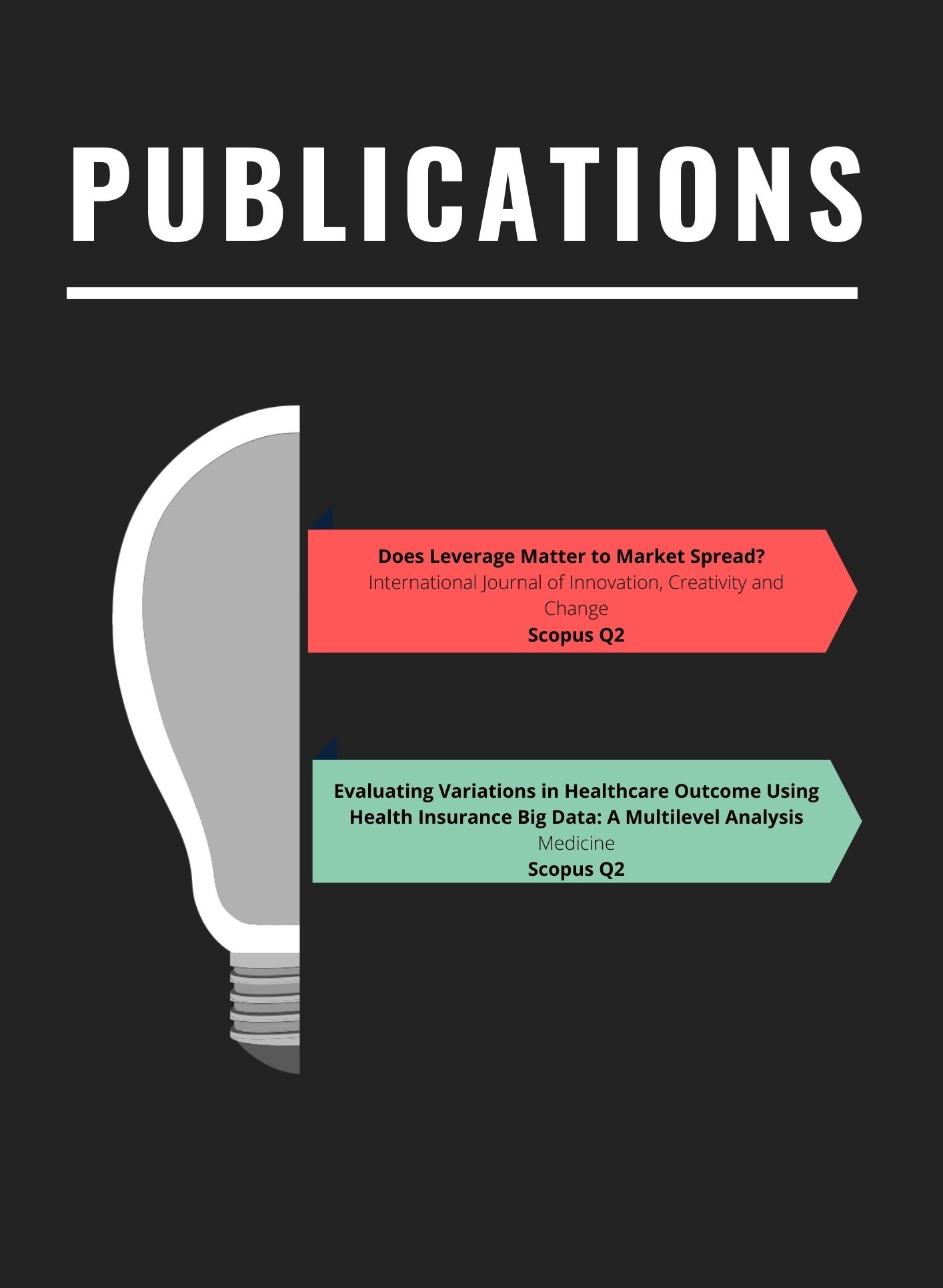
DOES LEVERAGE MATTER TO MARKET SPREAD?
Mohammed Hariri Bakri*, Ngau Duo Seng*, Mohamad Idham Md Razak** & Shahsuzan Zakaria**
*Faculty of Technology Management and Technopreneurship, Universiti Teknikal Malaysia Melaka, Malaysia.
E-mail: This email address is being protected from spambots. You need JavaScript enabled to view it., This email address is being protected from spambots. You need JavaScript enabled to view it.
**Faculty of Business and Management, Universiti Teknologi MARA, Puncak Alam Campus, 42300 Selangor, Malaysia.
E-mail: This email address is being protected from spambots. You need JavaScript enabled to view it., This email address is being protected from spambots. You need JavaScript enabled to view it.
Full article can be retrieved from here
ABSTRACT
Securitisation includes the transfer of illiquid resources to investors where such an exchange is supported by the issuance of obligation securities called Asset-Backed Debt Securities (ABS) through a Special Purpose Vehicle (SPV). The underutilisation of bonds or the absence of enhancement of the firm’s credit portfolio resulted in financial difficulties being faced by companies during the financial crisis in 1997. The fundamental focus in this investigation is on the determinants of primary market spread on RMBS, CMBS, and ABS, and this study intends to inspect 12 years of information, from 2004 to 2016. Past examinations have left gaps in this area of research. The research objective is to investigate determinants that incorporate domestic macroeconomic variables. The exploration will adopt a quantitative technique in investigating the information gathered, which is focused on pooled Ordinary Least Square (OLS) and panel data. Regarding the primary market spread in Malaysia, factors such as debt to equity showed significance in the primary market spread in the control models, and originators may want to consider this economic issue before issuing securitised products.
Keywords: Asset-Backed Debt Securities, Performance, Asset Pricing, Panel Data
1. INTRODUCTION
Financial markets conventionally consist of three primary types of instruments: (1) direct obligations of corporations and sovereigns, (2) derivatives, such as swaps and futures, and (3) securitised and structured assets (Andrew, 2003). The market for securitisation has developed drastically since its beginnings around three decades back, with the aggregate extraordinary issuance of securitised products expected to reach US$9 trillion before long (Vinok, 2006).
In particular, the entry of new originators from new regions into the market and new utilisations of securitisation by past conventional financial products are keeping the market energetic and dynamic. Researchers such as Vink and Fabozzi (2009), experts in the field of securitisation, studied the determinants of primary market spread and found that the spread can be explained in terms of credit rating and bond market conditions. Still, these studies were done in the United States and Europe. Little is known about the determinants of primary market spread for developing securitisation in Malaysia. This researcher would like to fill the gap by conducting this study. This paper intends to analyse the determinants that contribute to the primary market spread for securitisation in Malaysia at three different levels: firm-level, domestic macroeconomic level, and global macroeconomic level. Current literature regarding the work subject should be examined and the differences and similarities of the said work from the past should be presented clearly in the introduction section.
2. TITLE (MATERIAL AND METHOD)
This study uses secondary market data on securitisation in Malaysia between 2004 and 2014 (562 samples). The primary source for securitisation, Rating Agency Malaysia (RAM) Holdings Berhad, is a leading provider of independent credit ratings, research, risk analysis, training, credit information, and bond pricing. The forecasted extend from (Vink, 2009) variables could be considered to determine primary market spread, as extracted from the literature review. This study includes debt-to-equity, return on equity, and firm size. Therefore, this study specifies the general estimation model as follows:
Model 1 SPREAD = ∫(Debt-to-Equity, Return on Equity, Firm Size) ln SPit = αn + β1 ln DEit + β2 ln ROEit + β3 ln FSit + εit
where SP is Spread, DE is Debt Equity, ROE is Return on Equity, FS is Firm Size, 0? is the constant term, while ? is the slope coefficient and ??t is the error term where i stands for the ith firm and t for the tth period.
H1: Firm Debt to Equity has a positive and significant relationship with securitised firms’ spread.
H2: Firm Return on Equity has a negative and significant relationship with securitised firms’ spread.
H3: Firm Size has a negative and significant relationship with securitised firms’ spread.
3. RESULTS
Based on the estimation results on independent variables, it can be concluded per the Hausman test that the random effect model is the appropriate model. The results are more or less consistent between random and fixed effect estimators. The estimation output exhibits that the coefficient for DE and FS are negatively significant at 0.01 level. In contrast, the ROE is positively significant at 0.01 level for pooled OLS. As for the fixed effect, DE is significant at the 0.01 level. The difference in the sign of the coefficients indicates that the results of this study differ from the theories and past research by Nakashima and Saito (2009).
Likewise, the significant negative relationship at 0.01 level of DE is also not consistent with the findings of Collin-Dufresne et al. (2001), Bhojraj and Sengupta (2003), and Psillaki, Tsolas and Margaritis (2010), who all found positive relationships between spread and DE. However, recent research carried out in Malaysia by Fabozzi (2006) cited in Che-Yahya et al. (2016) and Bakri et al. (2018), argues that if a firm has higher capital, it will generate greater chances of growth in the future. As a result, the issuer’s growth opportunities may be the reason that there is a negative relationship between DE and the primary market spread in Malaysia.
It is interesting to note that, per the pooled OLS, the significant positive relationship at 0.01 level between an ROE and primary market spread in Malaysia is different from the findings of Che-Yahya et al. (2016). Although both fixed effect and random effect models exhibit negative relationships between return on equity and the spread of primary market securitisation in Malaysia, it is not significant at any level. This means that the return on equity may not be the dominant determinant that contributes to the primarymarket spread in Malaysia. In the chosen random effect model, DE is significantand has a negative relationship at 0.01 level while a ROE and firm size is not significant.
Furthermore, the value of R2 for random effect is the independent variables explained by the 0.2183 variation in the dependent variable. According to the Hausman test, the random effect appears to be the best model to explain factors that affect spread for this model. This indicates that REM is fit and valid for the data of the Model on securitised firms in Malaysia. The empirical finding is based on the main and robust reveals that DE has a negative relationship with securitisation performance.
The findings presented in this research have implications for securitisation and contribute to the theoretical framework by finding out the asset pricing of asset-backed securitised firms in Malaysia using panel data. This is because in Malaysia, there is a lack of studies done on securitised performance using panel data. Future studies could consider additional external factors such as exchange rate, economic growth, external debt, or other internal factors such as non-performing loans and different financial ratios.
REFERENCES
Andrew D., Anthony S., Lan-Ling W., Anne C. (2003). Securitization: Structuring and Investment Analysis. John Wiley and Sons (Asia) Pte Ltd. 1- 576.
Bakri, M.H., Sufian, F, Baharom, A.H and Ismail, S., (2018). Determinant of Securitization Spread In Malaysia. International Journal of Business and Society, 19(3), 904-917.
Bhojraj, S. and Sengupta P. (2003). Effect of Corporate Governance on Bond Rating and Yields: The Role of Institutional Investors and Outside Directors. Journal of Business, 6(3), 455-475.
Che-Yahya, N., Abdul-Rahim, R. and Mohd-Rashid, R. (2016). Determinants of Corporate Bond Yield: The Case of Malaysian Bond Market. International Journal of Business and Society, 17(2), 245–258.
Collin-Dufresne, P. and R.S.G. (2001). Do Credit Spread Reflect Stationary Leverage Ratios? The Journal of Finance, 56, 1929–1957.
Fabozzi, F.J. (2006). Bond Credit Analysis Framework and Case Studies. New Hope, Pennsylvania: Frank J. Fabozzi Associates.
Nakashima, K. and Saito, M. (2009). Credit Spreads on Corporate Bonds and the Macroeconomy in Japan. Journal of the Japanese and International Economies, 23(3), 309–331.
Psillaki, M., Tsolas, I.E. and Margaritis, D. (2010). Evaluation of Credit Risk based on Firm Performance. European Journal of Operational Research, 201(3), 873–881.
Vink, D. (2009). An empirical analysis of asset-backed securitization. In 21st Australasian finance & banking conference 2008 paper, Breukelen.
Vink, D. and Fabozzi, F.J., (2009). Non ‐ US Asset ‐ Backed Securities: Spread Determinants and Over ‐ Reliance on Credit Ratings. Yale ICF Working Paper, 9, 1–10.
Vinok K.,(2006). Securitization: The Financial Instrument of the Future. Clementi Loop: John Wiley and Sons(Asia) Pte Ltd.
EVALUATING VARIATIONS IN HEALTHCARE OUTCOME USING HEALTH INSURANCE BIG DATA: A MULTILEVEL ANALYSIS
Aziz Jamal*, Akira Babazono**, Yunfei Li**, Shinichiro Yoshida** & Takako Fujita***
*Health Administration Program, Faculty of Business and Management, Universiti Teknologi MARA, Puncak Alam Campus, 42300 Selangor, Malaysia.
E-mail: This email address is being protected from spambots. You need JavaScript enabled to view it.
**Graduate School of Medical Sciences, Faculty of Medicine, Kyushu University, Fukuoka Japan.
***Department of Health Sciences, Faculty of Medicine, Kyushu University, Fukuoka Japan.
Full article can be retrieved from here
ABSTRACT
The presence of comorbid conditions along with heterogeneity in terms of healthcare practices and service delivery could have a significant impact on a patient's outcomes. Therefore, the current study was conducted to quantify the extent to which such variations influence the risk of hemodialysis-associated infection (HAI). A total of 6,111 patients with end-stage renal disease (ESRD) who received hemodialysis treatment between 1 October 2015 and 31 March 2016 were identified from an insurance claim database. Patients were followed for one year from 1 April 2016 to 31 March 2017. A total of 200 HAI cases were observed during the follow-up and 12 patients died within 90 days of the onset of HAI. The results of the multilevel analyses indicated that HAI variations were only significant at the care facility level and were largely explained by the heterogeneity between care facilities. The results of this study highlight the need to look beyond the influence of patient-level characteristics when developing policies that aim at improving the quality of haemodialysis health care and service delivery.
Keywords: End-Stage Renal Disease, Hemodialysis, Infection, Insurance, Multilevel, Variations
1. INTRODUCTION
Hemodialysis-associated infection (HAI) has consistently been ranked as the main disease leading to death among dialysis patients (Jha et al., 2013). Using health insurance big data, this study attempts to examine the magnitude of the burden of HAI and quantify the extent to which patients, care facilities, and geographical characteristics influence variations in HAI risk. As understanding increases, information generated from the study would help in the development of policy and informed clinical practice on the prevention and control of infection.
2. METHOD
Data for analysis were obtained from the insurance claim records submitted to the Fukuoka Prefecture Association of Latter Stage Elderly Healthcare in Japan. A total of 6,111 patients with end-stage renal disease (ESRD) who received hemodialysis treatment between 1October 2015 and 31 March 2016 were identified from the insurance claim database. Patients were followed for one year from 1 April 2016 to 31 March 2017. The primary outcome was the development of hemodialysis-associated infection (HAI) after the index date (April 1, 2016). Quantification of area variations and contextual effects of care facility on both HAI risks were made by performing multilevel analyses, with patient data nesting in care facilities and within 13 secondary tiers of medical care areas (STMs). Data were fitted into multilevel Poisson regression with a random intercept. Units contributing to the likelihood of given intervals correspond to the “risk set” of Cox’s proportional hazards model (Rabe-Hesketch & Skondral, 2012). Four models were constructed. Model 0 was fitted without explanatory variables, and patient covariates were included in model 1 (sex, age, nephritis, diabetes mellitus, hypertension, malignancy & Charlson’s comorbidity Index), while health facility covariates (ownership & facility size) were added in model 2. Model 3 incorporate both patient and care facility covariates in the analysis. The magnitude of variations was assessed using model variance, Proportional Change in Variance (PCV), Inter-class Correlation Coefficient (ICC), and Median Hazard Ratio (MHR) (Rabe-Hesketch & Skrondal, 2012; Austin et al., 2016; Merlo et al., 2005)
3. RESULT
Variations were only statistically significant at health care-level. Variance was reduced following the inclusion of patient covariates (Model 1) and care facility covariates (Model 2). Controlling all covariates in our study, further reduction in model variance and MHR values were observed, as estimated by our random-effect model. Outcome variations at care facility-level were largely attributed to differences in healthcare covariates. Random-effect estimates are provided in Table 1.

4. DISCUSSION
To address significant variations in clinical outcomes at the care facility level, it is important to look beyond individual patient-level characteristics. While there were almost no variations at the area level, justifying spatial equity in the distribution and use of health care, significant variations exist at the care facility level. Therefore, the development of specific policies to reduce the incidence of hospital-induced infection and improve the survival of hemodialysis patients is urgently needed to address this issue. A task force that composes of various specialties must be set up and must work together to identify the best strategies for improving the current outcome and the quality of healthcare delivery.
REFERENCE
Austin, P. C., Wagner, P. & Merlo, J. (2016). The median hazard ratio: a useful measure of variance and general contextual effects in multilevel survival analysis. Stat Med. 2016 Mar 15; 36(6), 928-938. http://doi.org/: 10.1002/sim.7188
Jha, V., Garcia-Garcia, G., Iseki, K., Li, Z., Naicker, S.,
Plattner, B., Saran, R., Wang, A. Y. & Yang, C. W. (2013) Chronic kidney disease: global dimension and perspectives. Lancet, 382(9888), 260-72. https:// doi.org/: 10.1016/S0140-6736(13)60687-X.
Merlo, J., Yang, M., Chaix, B., Lynch, J. & Rastam, L. (2005). A brief conceptual tutorial on multilevel analysis in social epidemiology: investigating contextual phenomenon in different group of people. J Epidemiol Community Health. 2005 Jun; 59(6), 443-449. https//:doi.org/: 10.1136/jech.2004.023473
Rabe-Hesketh, S. & Skrondal, A. (2012). Multilevel and Longitudinal Modeling Using Stata, Volume 2: Categorical Response, Counts, and Survival. (3rd ed). Stata Press.





